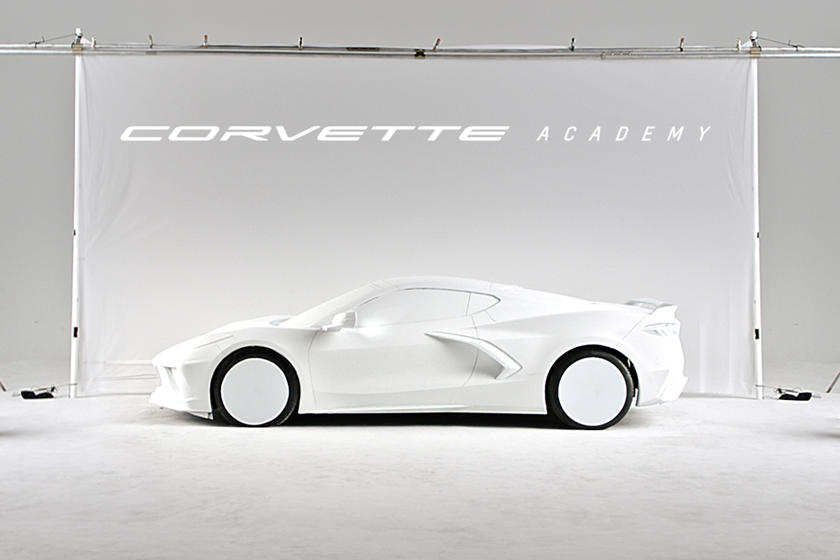Although introduced in the 80s, most famously by legendary Chuck Hull, 3D printing has been a well-kept secret by organizations like NASA and numerous automotive companies who have been enjoying the magic of digital fabrication for decades. General Motors qualifies as one, using the technology since the late 80s and continuing to do so today. The proof lies in its latest, spectacular prototype of a Chevrolet Corvette—almost completely 3D-printed.
And while the public loves to hear about affordable and snazzy 3D-printed cars, modern buses, or even bikes—here, GM is going back to the roots of rapid prototyping—and using all the classic benefits of 3D printing for research, design, and complex engineering. With an advanced prototype of the 2020 Stingray, comprised 75 percent of 3D-printed parts, automotive engineers have the incredible luxury of designing lightweight, durable parts for rigorous testing.
And if the components don’t fit or work properly? The days of yore and going back to the drawing board are just an old-fashioned concept as the C8 team can simply refigure a 3D design, 3D print the part again quickly and affordably, and go back to the assessment of performance.
According to Kevin Quinn, GM director of additive design and manufacturing, their team is able to “quickly get a prototype part. We can iterate that part maybe five times in a week, so you make sure you get the right design.”
Such latitude in design and further development must feel like a huge luxury to engineers in many different industries—in comparison to how the process used to work with considerable waiting time required in between iterations. Additive manufacturing processes have also evolved substantially in recent years in terms of hardware, software, and a wide range of materials, to include major strides with metal. For this project, it means that any design discrepancies are fixed quickly and on-site, and the C8 team is also able to make sure that necessary areas can be accessed by engineers and mechanics during production.
3D-printed parts have also been used to assess the opening/closing mechanisms of the retractable folding hardtop, and right-hand drive mechanisms for models being sold in the UK and Australia. 3D printing allows for the evaluation of important sensing devices for vehicles with driver assistance features. These sensors can also be used in the actual training of robots that are involved in the manufacturing of functional parts later.
[Source / Images: CarBuzz]“You can print a couple of parts and that’s good enough for robots to be able to assess access points and buildability,” said Ron Daul, GM director of additive manufacturing.
Subscribe to Our Email Newsletter
Stay up-to-date on all the latest news from the 3D printing industry and receive information and offers from third party vendors.
Print Services
Upload your 3D Models and get them printed quickly and efficiently.
You May Also Like
3D Printing News Briefs, July 2, 2025: Copper Alloys, Defense Manufacturing, & More
We’re starting off with metals in today’s 3D Printing News Briefs, as Farsoon has unveiled a large-scale AM solution for copper alloys, and Meltio used its wire-laser metal solution to...
3DPOD 260: John Hart on VulcanForms, MIT, Desktop Metal and More
John Hart is a Professor at MIT; he´s also the director of the Laboratory for Manufacturing and Productivity as well as the director of the Center for Advanced Production Technologies....
3D Printing News Briefs, June 28, 2025: Defense Accelerator, Surgical Models, & More
In this weekend’s 3D Printing News Briefs, 3YOURMIND was selected to join an EU Defense Accelerator, and PTC has announced model-based definition (MBD) capabilities within Onshape. Finally, a study out...
EOS in India: AM’s Rising Star
EOS is doubling down on India. With a growing base of aerospace startups, new government policies, and a massive engineering workforce, India is quickly becoming one of the most important...







































